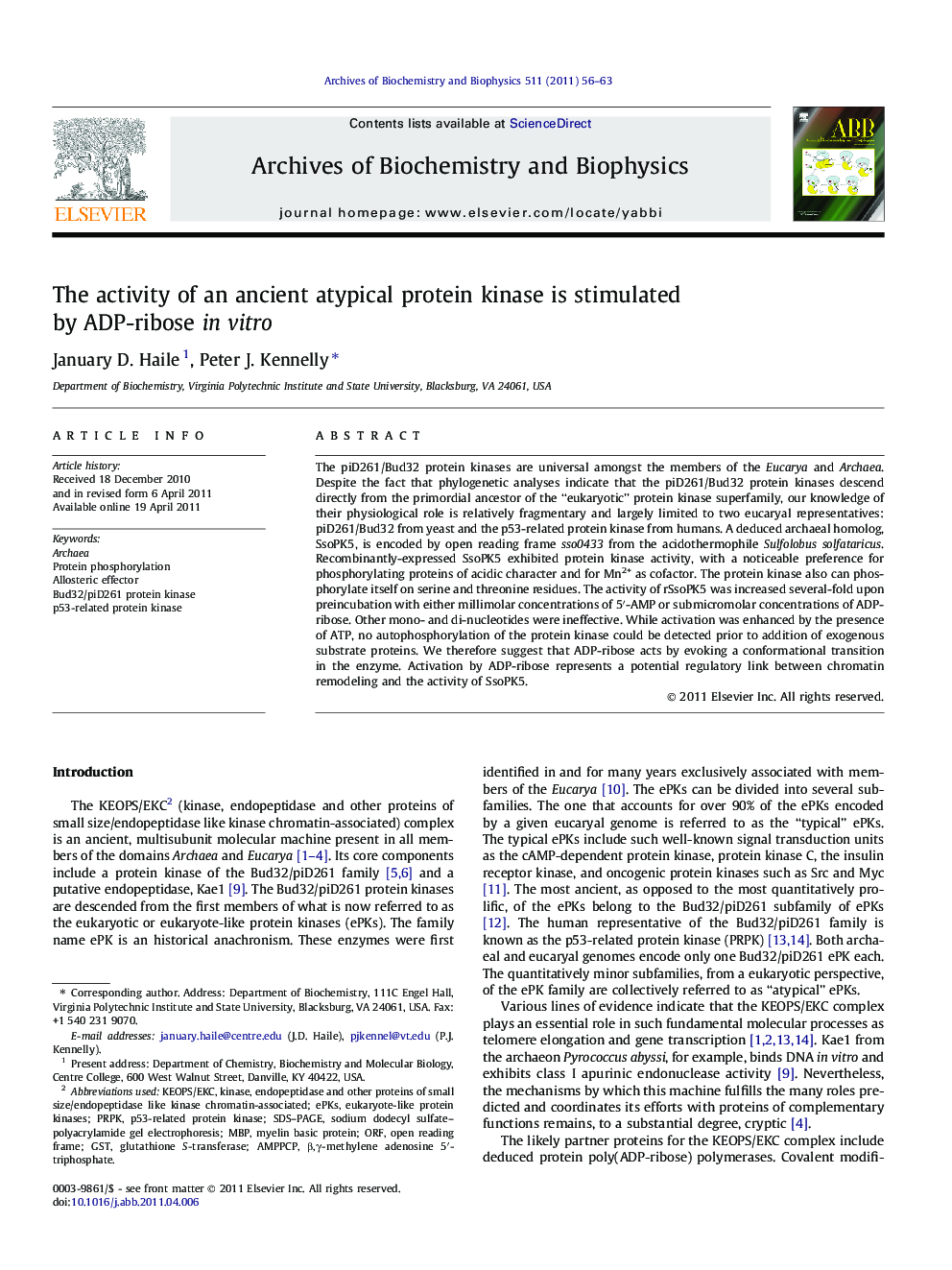| Article ID | Journal | Published Year | Pages | File Type |
|---|---|---|---|---|
| 1925701 | Archives of Biochemistry and Biophysics | 2011 | 8 Pages |
The piD261/Bud32 protein kinases are universal amongst the members of the Eucarya and Archaea. Despite the fact that phylogenetic analyses indicate that the piD261/Bud32 protein kinases descend directly from the primordial ancestor of the “eukaryotic” protein kinase superfamily, our knowledge of their physiological role is relatively fragmentary and largely limited to two eucaryal representatives: piD261/Bud32 from yeast and the p53-related protein kinase from humans. A deduced archaeal homolog, SsoPK5, is encoded by open reading frame sso0433 from the acidothermophile Sulfolobus solfataricus. Recombinantly-expressed SsoPK5 exhibited protein kinase activity, with a noticeable preference for phosphorylating proteins of acidic character and for Mn2+ as cofactor. The protein kinase also can phosphorylate itself on serine and threonine residues. The activity of rSsoPK5 was increased several-fold upon preincubation with either millimolar concentrations of 5′-AMP or submicromolar concentrations of ADP-ribose. Other mono- and di-nucleotides were ineffective. While activation was enhanced by the presence of ATP, no autophosphorylation of the protein kinase could be detected prior to addition of exogenous substrate proteins. We therefore suggest that ADP-ribose acts by evoking a conformational transition in the enzyme. Activation by ADP-ribose represents a potential regulatory link between chromatin remodeling and the activity of SsoPK5.
► Activation of archaeal protein kinase reveals potential signaling role for ADP-ribose. ► Archaeal homlog of p53-related protein kinase phosphorylates p53 in vitro. ► Activation of SsoPK5 by ADP-ribose does not require autophosphorylation or hydrolysis. ► SsoPK5 autophosphorylates itself on a threonine conserved in yeast and human versions.
